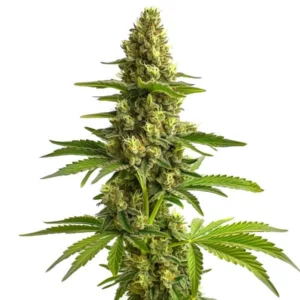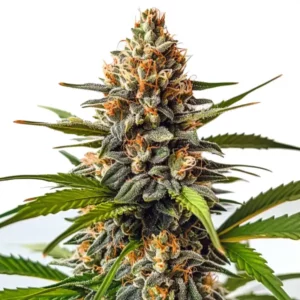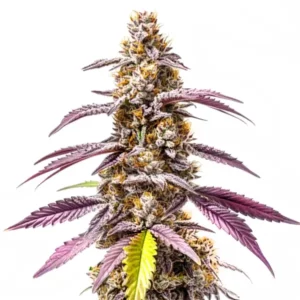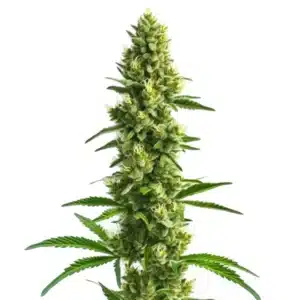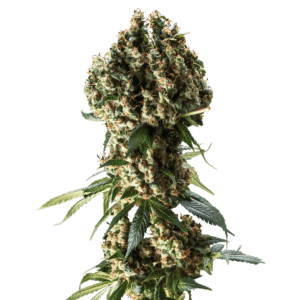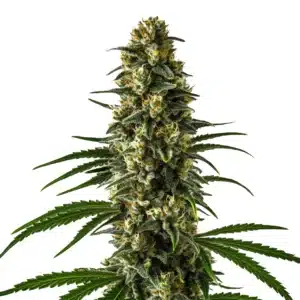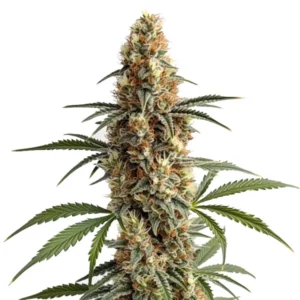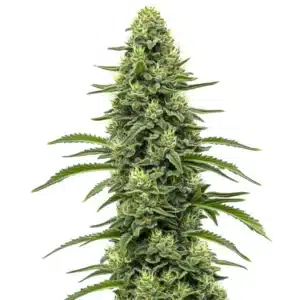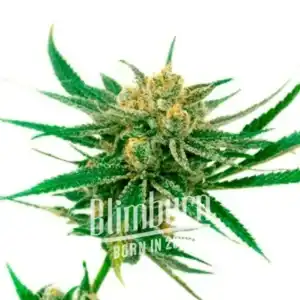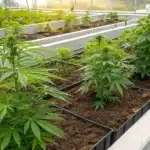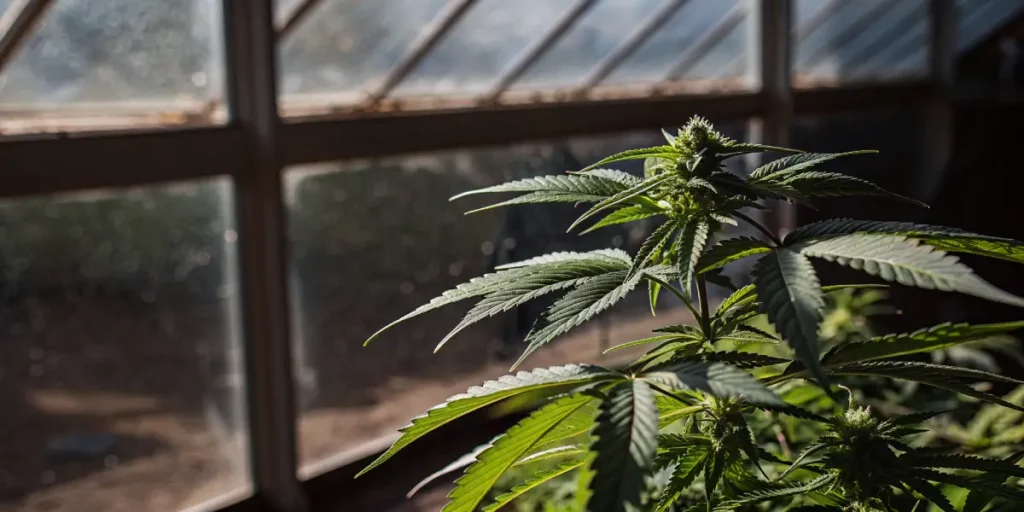
How Light Intensity Increases ROS in Cannabis
Cannabis plants basking under bright lights might seem happy, but too much light can lead to trouble. Light intensity effects on cannabis ROS (reactive oxygen species) can create stress for your plants. Increased ROS in cannabis due to light is a common issue for both novice and veteran growers. Understanding how light-induced ROS production in cannabis works can help you manage your grow room more effectively.
Reactive oxygen species aren’t always bad. In small amounts, they can signal growth and help fight off diseases. But when the impact of light intensity on cannabis oxidative stress becomes too much, the plants suffer. The balance is key, and recognizing the signs of stress early can save your crop.
Recommended Strains
Bruce Banner #3
|
|
THC | 20% - 29% (High) |
|
|
Type | Feminized |
|
|
Yield | Medium |
|
|
Phenotype | 50% Indica / 50% Sativa |
Blue Dream
|
|
THC | 17% - 24% (Medium) |
|
|
Type | Feminized |
|
|
Yield | High |
|
|
Phenotype | 50% Indica / 50% Sativa |
One of the strains that can handle varying light conditions well is the Bruce Banner 3 from Blimburn Seeds. Known for its resilience, it still requires careful monitoring to prevent light-induced ROS production in cannabis from reaching harmful levels.
What Are Reactive Oxygen Species?
Reactive oxygen species, or ROS, are molecules containing oxygen that are highly reactive. In plants, they form during photosynthesis especially under high light intensity. Light intensity effects on cannabis ROS can trigger oxidative stress, affecting plant health.
When light hits the plant, it powers photosynthesis, but too much light can cause an overflow of energy. This overflow leads to increased ROS in cannabis due to light, which can damage cells. It’s like a plant sunburn, and just like with your skin, too much exposure can lead to problems.
Moreover, cannabis reactive oxygen species are part of the plant’s natural defense mechanism. However, when the balance tips, these molecules can turn from allies to adversaries. Maintaining optimal light conditions can help mitigate the adverse effects of high ROS levels.
The role of ROS in growth and stress response highlights the need for careful environmental control. As growers, understanding the intricate balance of ROS and how light intensity increases ROS in cannabis is essential for nurturing healthy plants and maximizing yield.
How Light Intensity Triggers ROS
Photosynthesis is the main process driving ROS production. Light intensity increases ROS in cannabis by accelerating this process. However, when the light is too intense, the plant’s photosystems become overexcited, leading to excess ROS.
In practical terms, this means that if you’re using high-powered grow lights, you need to watch for signs of stress. Leaves may curl, wilt, or show discoloration. These are indicators that the light intensity effects on cannabis ROS are pushing the plant into oxidative stress.
Furthermore, high light conditions can lead to an imbalance in the plant’s energy systems. This imbalance is often what causes the overproduction of ROS. By controlling light intensity and duration, growers can keep the photosynthesis process stable, reducing unnecessary stress.
Knowing the dynamics of light and photosynthesis can also aid in selecting the right equipment for your grow setup. Not all lights are created equal, and choosing the right one can significantly influence how light intensity affects ROS production in cannabis.
Promos & Deals
Preventing Light-Induced ROS Production
Managing light levels is crucial to prevent oxidative stress. Adjust the distance between the plant and the light source. This simple change can reduce the impact of light intensity on cannabis oxidative stress.
Use a light meter to ensure your plants receive optimal light. Different strains have varying light needs. For example, the Blue Dream strain from Blimburn Seeds thrives under moderate light, reducing the risk of increased ROS in cannabis due to light.
Regular monitoring and adjustments are key strategies in managing light intensity. As plants grow, their light requirements may change, necessitating modifications to maintain optimal conditions. This proactive approach can prevent light-induced ROS production in cannabis.
Additionally, employing reflective surfaces in your grow space can enhance light distribution. This ensures all parts of the plant receive adequate light, minimizing localized stress and the associated risk of elevated ROS levels.
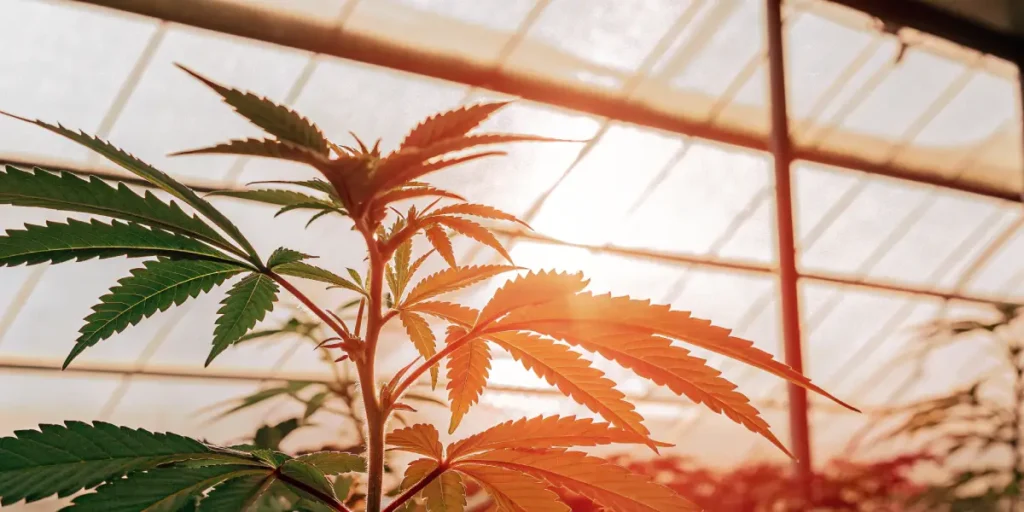
Signs of Oxidative Stress
Observing your plants regularly helps catch early signs of stress. Look for leaf discoloration, brown spots, or wilting. These signs indicate that light intensity increases ROS in cannabis, leading to stress.
Another practical method is rotating your plants. This ensures even light distribution and reduces the risk of localized stress. With strains like Girl Scout Cookies, this practice can significantly decrease light-induced ROS production in cannabis.
Beyond physical signs, it’s important to monitor growth rates and overall plant vigor. Sudden drops in these areas can also suggest that the impact of light intensity on cannabis oxidative stress is becoming detrimental.
Using environmental sensors can provide real-time data on light intensity, temperature, and humidity. This information is invaluable for making informed adjustments and maintaining conditions that discourage excessive ROS production.
FAQs
How does light intensity affect cannabis growth?
Light intensity plays a crucial role in cannabis growth by driving photosynthesis. However, excessive light can lead to increased ROS in cannabis due to light, causing oxidative stress. Proper light management is essential to avoid these adverse effects.
Balancing the light intensity ensures optimal growth without pushing the plants into stress. Different strains, like those from Blimburn Seeds, have specific light needs, and adjusting light levels accordingly can enhance their growth.
Knowing how light intensity increases ROS in cannabis is vital for growers aiming to optimize their yields. By tailoring light conditions to match the specific needs of each strain, you can improve both plant health and productivity.
Additionally, incorporating natural light cycles, when possible, can help mimic the plant’s natural environment, promoting resilience and reducing the likelihood of stress-related issues.
What are common signs of oxidative stress in cannabis?
Common signs of oxidative stress include leaf discoloration, curling, wilting, and brown spots. These symptoms result from the impact of light intensity on cannabis oxidative stress, which damages the plant cells.
Monitoring your plants regularly helps identify these signs early. Adjusting light levels, rotating plants, or choosing adaptable strains like Bruce Banner can prevent excessive light-induced ROS production in cannabis.
Besides to visual cues, using tools like chlorophyll meters can provide insight into the plant’s health. These devices measure the chlorophyll content of the leaves, offering an indirect way to assess stress levels.
Implementing a holistic approach that considers both environmental factors and plant biology will aid in managing ROS levels and maintaining plant health throughout the growth cycle.
How can I manage light levels for different cannabis strains?
Each cannabis strain has unique light requirements. Using a light meter helps determine the optimal light intensity for your strain. Strains like Blue Dream from Blimburn Seeds thrive under moderate light, reducing the risk of oxidative stress.
Adjust the distance between the plants and the light source to manage intensity. Additionally, consider the light cycle duration to ensure the plants receive the right amount of light and darkness, promoting healthy growth.
Another effective strategy is to group strains with similar light needs together. This allows for more precise control over the light environment, ensuring that all plants receive the optimal conditions they require.
Furthermore, being aware of each strain’s growth phase can inform light adjustments. Different stages of growth may demand different light intensities, and adapting to these changes can prevent unwanted stress.
Can all cannabis strains handle high light intensity?
Not all cannabis strains are suited for high light intensity. Some, like Girl Scout Cookies, are more adaptable, but many can suffer from increased ROS in cannabis due to light. It’s essential to research and select strains based on your setup.
Opt for strains known for their resilience if you plan to use intense lighting. Regular monitoring and adjustments are crucial to prevent light-induced ROS production in cannabis and ensure healthy plant development.
Engaging with the cannabis growing community and gathering insights from experienced growers can provide valuable information on which strains perform best under specific lighting conditions.
Incorporating adjustable lighting systems can also offer flexibility. These systems allow you to fine-tune light intensity as needed, accommodating the needs of various strains and growth stages.
What practical steps can I take to reduce ROS in my cannabis plants?
To reduce ROS, ensure your plants receive balanced light. Adjust the light source distance, use a light meter, and select suitable strains. Regularly rotate plants to ensure even light distribution and prevent localized stress.
Consider environmental factors like temperature and humidity, as they can influence ROS levels. By creating a balanced environment, you can manage the light intensity effects on cannabis ROS effectively, promoting healthier plant growth.
Incorporating anti-stress treatments, such as antioxidants or stress-relieving supplements, can also help manage ROS levels. These products are designed to support the plant’s natural defenses against oxidative stress.
Finally, maintaining a comprehensive grow journal can be invaluable. Recording environmental conditions and plant responses over time helps identify patterns and refine strategies for reducing ROS and optimizing plant health.


